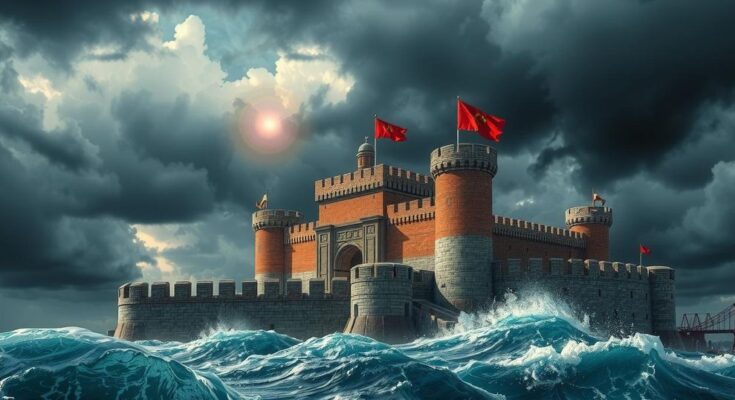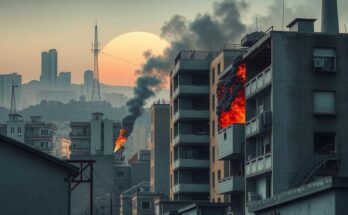Fighting has escalated in the DRC near Goma, prompting Western nations to advise evacuations. The humanitarian crisis has intensified, with over 400,000 displaced this year. MONUSCO is engaged in combat against M23 forces, while the UN prepares for an emergency meeting to address the situation. Diplomatic solutions appear elusive, adding to the urgency of military responses.
Intensifying clashes between the Democratic Republic of the Congo (DRC) army and M23 rebels have erupted near Goma, prompting Western nations, including the United Kingdom, United States, and France, to advise their citizens to evacuate the city. Warning of a rapid deterioration in the situation, authorities indicated that civilians should depart while transport options remain accessible. The unrest follows unsuccessful peace talks, allowing the militia, allegedly supported by Rwandan forces, to seize significant areas in Eastern DRC, escalating a humanitarian crisis for Goma’s million residents.
The United Nations peacekeeping mission in DRC, known as MONUSCO, reported active engagement in combat against M23 forces. In an official statement, MONUSCO disclosed that its Quick Reaction Forces had utilized heavy artillery against rebel positions. As of now, more than 400,000 individuals have been displaced this year amid the ongoing conflict, raising alarms of a possible regional war, prompting an emergency UN Security Council meeting to convene on Monday to review the escalating crisis.
UN Secretary-General António Guterres expressed grave concern regarding the resumption of hostilities. Reports from the UN refugee agency revealed skyrocketing displacement figures, with many fleeing to seek safety from recent bombardments. Various families have sought refuge in Goma city itself, exacerbating the already challenging security and humanitarian conditions for internally displaced persons.
As fighting rages approximately 20 kilometers west of Goma, military actions have intensified. Witnesses reported Congolese military helicopters being deployed near M23 positions, adding more complications amidst regular cuts to internet and mobile connectivity. Tragically, the military governor of North Kivu died due to gunfire near the frontlines on Friday while President Felix Tshisekedi held critical defense council discussions regarding the conflict.
In response to the escalating violence, the Congolese military deployed helicopter gunships targeting M23 fighters’ advances. Civilians have been fleeing on foot toward the center of Goma amidst the chaos. The region has experienced decades of unrelenting violence, with the M23 previously occupying Goma in 2012, only to be expelled through collaborative efforts from the DRC army and MONUSCO. Recent diplomatic endeavors to resolve the crisis have stalled, culminating in failed peace talks and multiple broken ceasefires.
The Democratic Republic of the Congo has faced ongoing violence, particularly in the eastern region, where various militia groups, including M23, operate. The M23—briefly occupying Goma in 2012—has renewed its offensive in recent weeks, exploiting failures in diplomatic negotiations. This continued conflict has led to severe humanitarian issues, with hundreds of thousands displaced from their homes. International involvement reflects the global community’s concern regarding potential wider regional destabilization stemming from ongoing hostilities.
The deteriorating situation around Goma, driven by intensified conflict between the DRC army and M23 insurgents, poses an urgent humanitarian crisis. Western nations have advised their citizens to leave, while the UN has mobilized its resources amid rising displacement numbers. Continued military actions and failed diplomatic resolutions highlight the precarious state of peace in the region, raising fears of broader conflict in East Africa.
Original Source: www.france24.com




